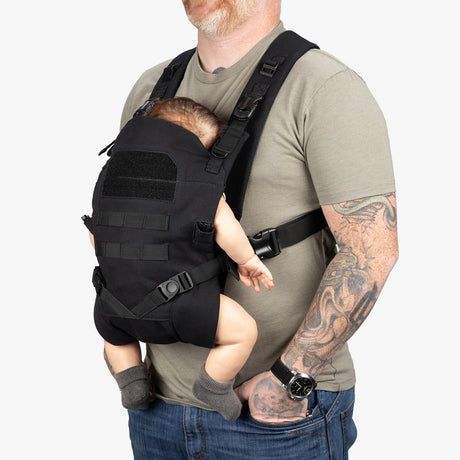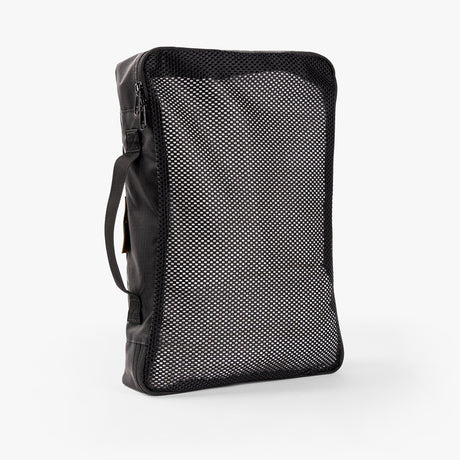A disaster can happen at any time, and when one strikes, you want to be ready. Whether you are sheltering-in-place to ride out a massive snow storm, or you have to evacuate with kids because of a hurricane or fire, you want to be as prepared as you can possibly be. With kids that might be a challenge, but it is not impossible.
It just takes a little finesse and a lot of planning.
Planning Covers a Multitude of Emergency Mishaps
In the heat of the emergency, you won’t have time to do much. You grab your gear and go. Now, children tend to catch that energy and ride the wave, acting like they’ve spent the day in an all-you-can-eat candy buffet. They get hyper.
That can get you rattled, but that’s where planning comes in.
The first time you grab your stuff and go should not be when you actually need to do it. Run some drills. Give them some practice. Give the kids (and yourself!) the opportunity to prepare, run through the plan, and get a feel for how it will be when you really need it.
This also gives you the opportunity to spot any holes in your plan or see if you are missing items that you need to add. You can time it and see how efficient it is, then tweak it until it works.
Make it a game for the kids with a treat at the end. Keep it low key and fun with no pressure or scare tactics. Young children can become fearful if it is presented as a serious, scary situation. Keep it light and reassure them, flip each thing you do when walking through your plan so that it lets the child feel safe. Then, when something happens that requires you to take action, everyone will be prepared and will be less likely to freak out.
The Bag
Each family member should have their own bag. Now keep in mind that you will be carrying the bags for small children and infants, so you need to factor that into your own prepping plan. It could mean combining the prep for a couple of family members, or it might mean a larger bag. Whatever the case, it is something to keep in mind.
The bags for each family member should be roomy enough to pack the things you need, but not so big that they are bulky and are difficult to carry. You are also looking for lots of pockets and a built-in mini cooler for bottles, water, and snacks.
Some people use a large rucksack or backpack, but they usually don’t have all the important features that you want, especially when prepping with kids.
The Staples
There are some basics that you want to pack. You can include them in one member’s bag, or you can divide it among several people who will be with you. These are the basic staples, but you may have other things to add or ones that you can eliminate:
- List of important names and phone numbers as well as other important information (everybody needs to have their own copy in case someone gets separated from the group). Having them laminated can be useful
- First aid kit
- Enough water and non-perishable food for 72 hours
- Duct tape
- Large garbage bags
- Debit card, cash, copy of important documents like mortgage, car registration, birth certificates, social security cards, etc.
- Flashlights
- Batteries
- Tarp
- Heat source
- Protective gear like N95 masks, goggles, etc.
- Toilet paper
- Matches, waterproof lighter, flint, etc.
- Lavender essential oil – a MUST HAVE for relaxing and calming anxiety. Mix it with lotion and put on children’s feet and backs, put a few drops on their blanket, etc.
Preparing Your Kids for a Disaster (by Age Group)
Different ages call for different types of prep – but don’t go solely by age. A seven-year-old may have the maturity of a nine-year-old – or a five-year-old. Look at the child, not just a number.
Infants – The infant stage is pretty short, and you might be tempted to skip prepping for your baby, but don’t. If there is a disaster, you don’t want to forget anything.
- Formula and bottles (if formula feeding)
- Manual pump and bottles (if breastfeeding)
- Bottled water
- Enough diapers for at least 72 hours
- Changing pad
- Burp pads
- Several changes of clothes
- Several pairs of socks
- Stocking cap or head covering (for warmth or to protect against sunburn)
- Baby blankets
- Pacifier, pacifier holder, or comfort item
- Baby food and cereal (if transitioning to solids)
- Thermometer
- Acetaminophen, other medications
- A few small bottles of prune juice (natural remedy for mild constipation)
- Hand sanitizer
- Baby wipes
- Sterilizing agent (drops or tablets) for bottles and other items with cold water
- Insect repellent for babies
- Infant carrier with storage
- Toddlers, Pre-Kindergarten and Kindergarten – The challenge with children in this age group is often keeping them occupied. Toddlers are wiggly and little people tend to have an abundance of energy and they aren’t afraid to use it. Packing for this is a little different than for infants.
- Snacks
- Water
- Thermometer
- Acetaminophen and other medications your child takes
- Some small activity toys such as an ISpy game, crayons and paper, a few small cars, etc.
- 3-4 Changes of clothes
- Extra socks
- Extra underwear
- Extra shoes, rain boots, etc.
- Snacks
- Pull ups (if your child wears them)
- Comfort item
- Blanket and small pillow
- Hand sanitizer
- Baby wipes & pouch
- Toiletry items – toothbrush, toothpaste, brush, comb, etc.
- A couple of hand towels and washcloths
- Pajamas
- Jacket
- Ear plugs or headphones with a battery powered device (preferably you can change the battery instead of charging it) for scary noises like wind during a storm
- Lollipops or other small treats that can temporarily pacify and distract a child
Elementary School – At this age they understand more and can get involved in preparing. Another bonus for this age is that they have not yet mastered the pre-teen/teen eyeroll and they still think their parents are pretty cool (albeit a little embarrassing). Take advantage of this magical time and enjoy it because it is fleeting.
- Water
- Snacks
- A couple of changes of clothing
- Extra socks
- Extra pair of shoes
- Extra underwear
- Thermometer
- Acetaminophen
- Comfort item
- Blanket and small pillow
- Baby wipes
- Toiletry items – toothbrush, toothpaste, brush, comb, etc.
- Couple of hand towels and washcloths
- Pajamas
- Jacket
- Ear plugs or headphones with a battery powered device (preferably you can change the battery instead of charging it) for scary noises like wind during a storm
- Books or drawing supplies
- Small bag they can wear (like a fanny pack) that contains some of the basics like first aid supplies, hand sanitizer, etc.
Middle and High School – Your pre-teens and teenagers can be a great help when you are preparing for your family. Get them involved and let them know that they are an important part of the process. Ask for their input and listen to what they have to say. They just might surprise you. At this age, they are usually able to carry their own bag and help with younger children, which can be tremendous whether you are evacuating or staying put. Sheltering in place with kids can be tough and it’s really nice to have an extra pair of hands. Give them the opportunity to step up and help.
- Water
- Snacks
- A couple of changes of clothing
- Extra socks
- Extra pair of shoes
- Extra underwear
- Thermometer
- Acetaminophen for fever
- Ibuprofen for inflammation and pain
- Blanket and small pillow
- Baby wipes
- Toiletry items – toothbrush, toothpaste, brush, comb, etc.
- Couple of hand towels and washcloths
- Pajamas
- Jacket
- Battery powered device (preferably you can change the battery instead of charging it)
- Books or drawing supplies
- Small bag they can wear (like a fanny pack) that contains some of the basics like first aid supplies, hand sanitizer, etc.
- Cash
Top Tips for Family Prepping with Kids
Every family is different, and every kid is definitely different, so when it comes to preparing for a disaster, you will need to tailor your plans and prep to suit your family and children. However, there are some things that are tried and true which you should consider.
- Create contact cards for each family member that contain contacts that are outside of the area. They may be in a different city or a different state. That way, if they can’t reach anyone local, they can reach that point of contact who may not have been affected by the disaster. It can be another way to coordinate if you are separated for some reason.
- Decide on a meeting place in case of a disaster and make sure your entire family knows to go there and knows how to get there.
- When your children go to school, make sure that they have an extra bottle of water and a snack like a granola bar in their bag, just in case something happens, and they have to wait for you to get them.
- Assemble a main family emergency kit and involve everyone in putting it together. It can open up some great conversations about disasters and how we can prepare for them. Keep it light but still let them know it is important.
- Visit a preparedness site like Ready Kids and get your children involved in reading about disasters, playing the games, and learn about how families can prepare for disaster with children.
- If you have pets, involve the children in preparing for them as well. Kids need to learn the proper way to prepare for a disaster with pets.
- If you are in an area that is prone to extreme weather, such as a northern state that has blizzards or a state along the Gulf Coast or the east coast that has hurricanes, keep some packaged and canned food on hand with a manual can opener and a camping cook stove for heating the food (in case the power goes out). Keep the food in an area that is dry and cool, check the expiration dates regularly (at least every six months) and rotate out older food.
- Every six months you should replace your water supply.
- If there are items that you don’t pack, keep a list but limit it to about 20-30 items – short enough so that you can grab those things in less than 5 minutes. You can keep a paper list and a list on your phone.
- Make sure you have an emergency kit in your car in case you have to evacuate, or you get stuck in your car. Include water, snacks, blankets, flashlights, and other essentials.
Preparing for a disaster ahead of time and being ready at a moment’s notice can be vital in getting your family to safety as quickly and efficiently as possible. Prepping with kids may not be entirely easy, but it is so worth it. After all, you’re all in this together.




























